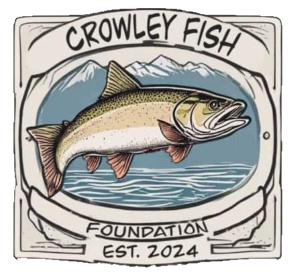As revealed in the photos, fishing on Crowley Lake is about as scenic as it gets.
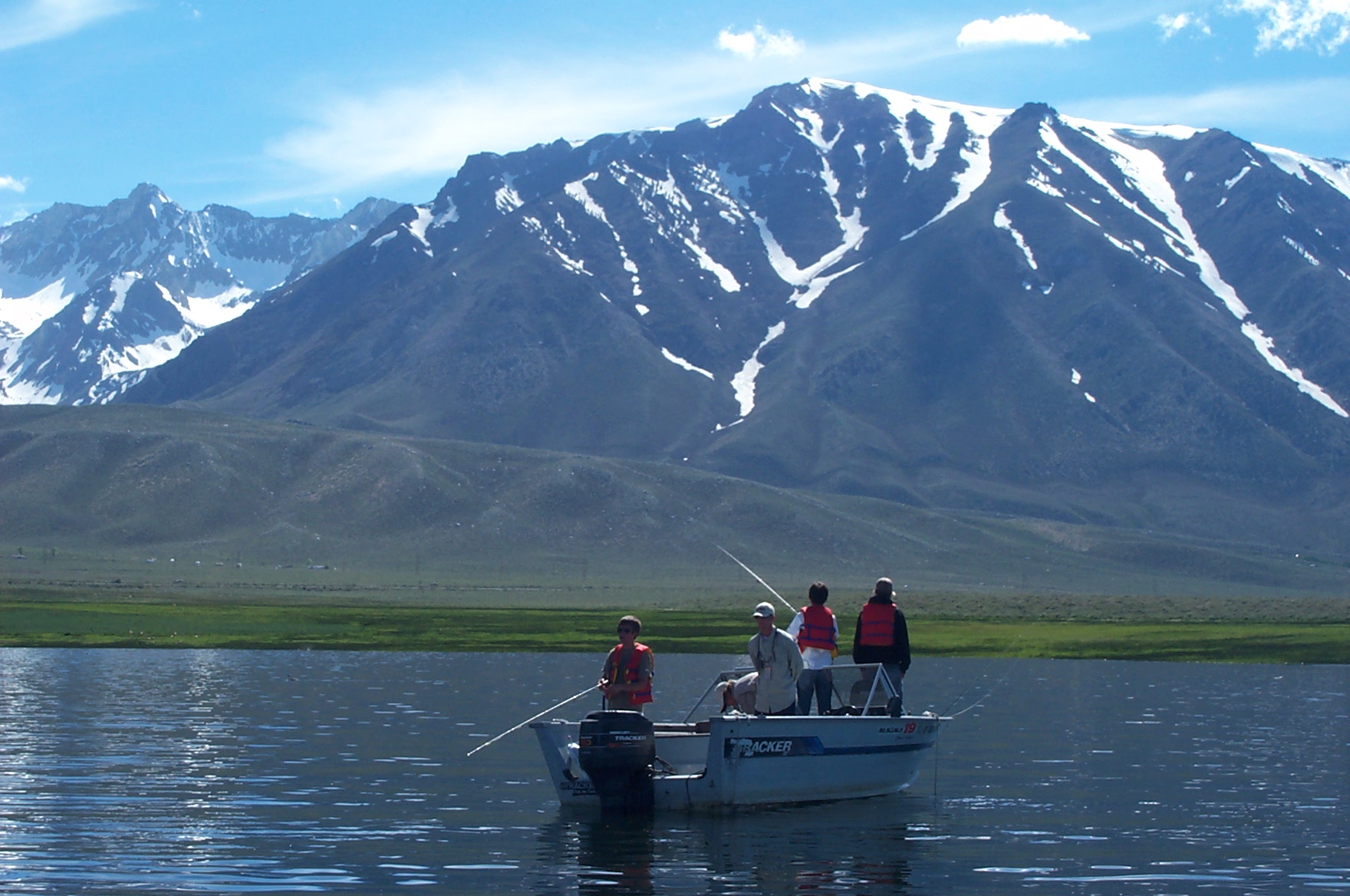
You would not, however, have wanted to be anywhere near here around 780,000 years ago, when, over a six-day period, the Long Valley Caldera massively erupted, wholly transforming the region and leaving it a pretty inhospitable place for thousands of years.
The lake’s stunning views, especially of the Bishop Tuff rock formations to the south and east, are in large part due to that eruption. While we are thankful for those views, we’re even more grateful that the volcano has largely calmed down. Largely, but not entirely: It is still active, as evidenced in the thermal hot springs bubbling up out of another of the region’s premier fishing spots: Hot Creek, to the north of the Mammoth Airport.
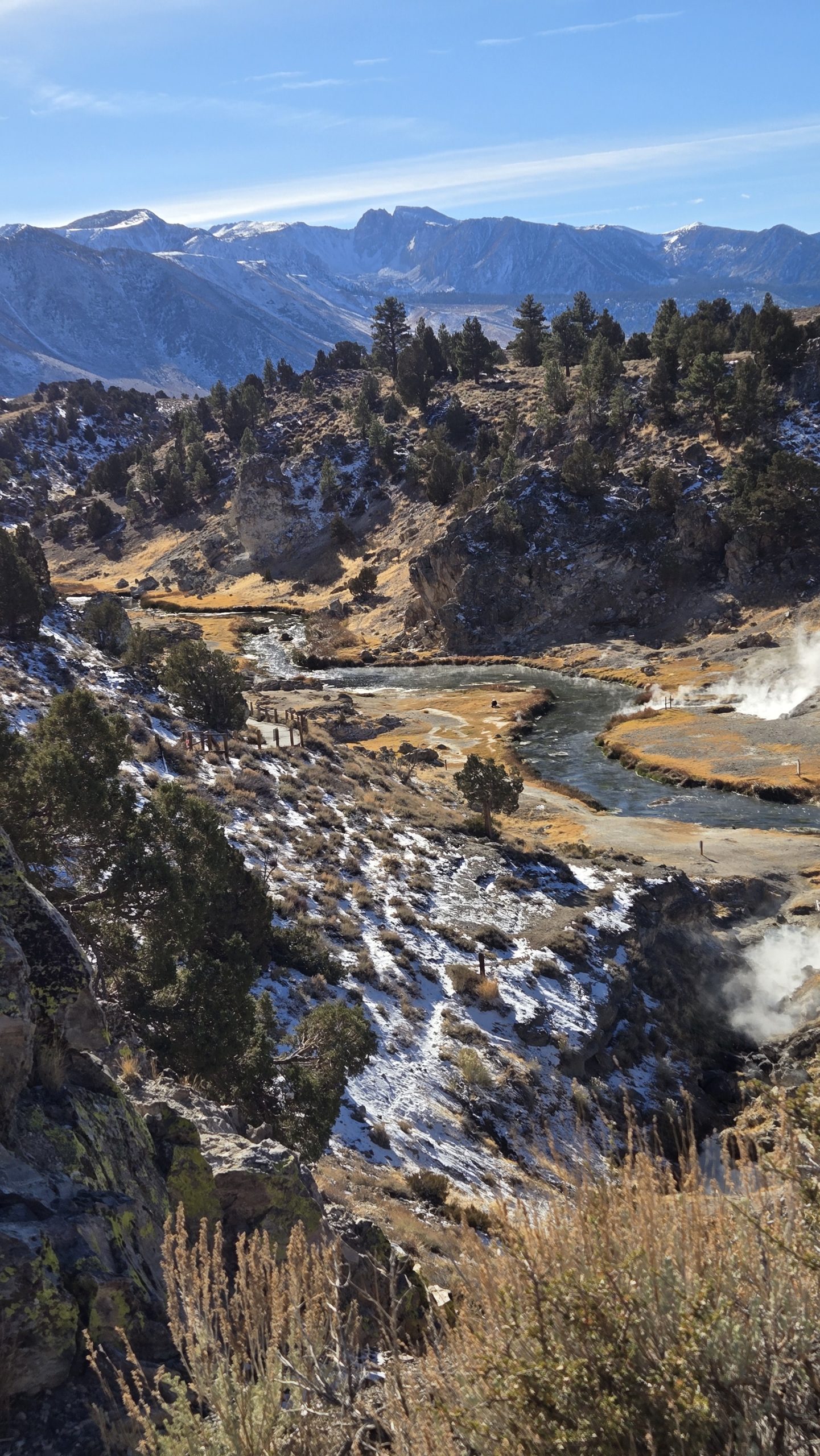
In short, while you are landing that 20-inch Crowley Bow, take a moment to look around the surrounding hills and mountains, and grasp that you are in the middle of an enormous caldera.
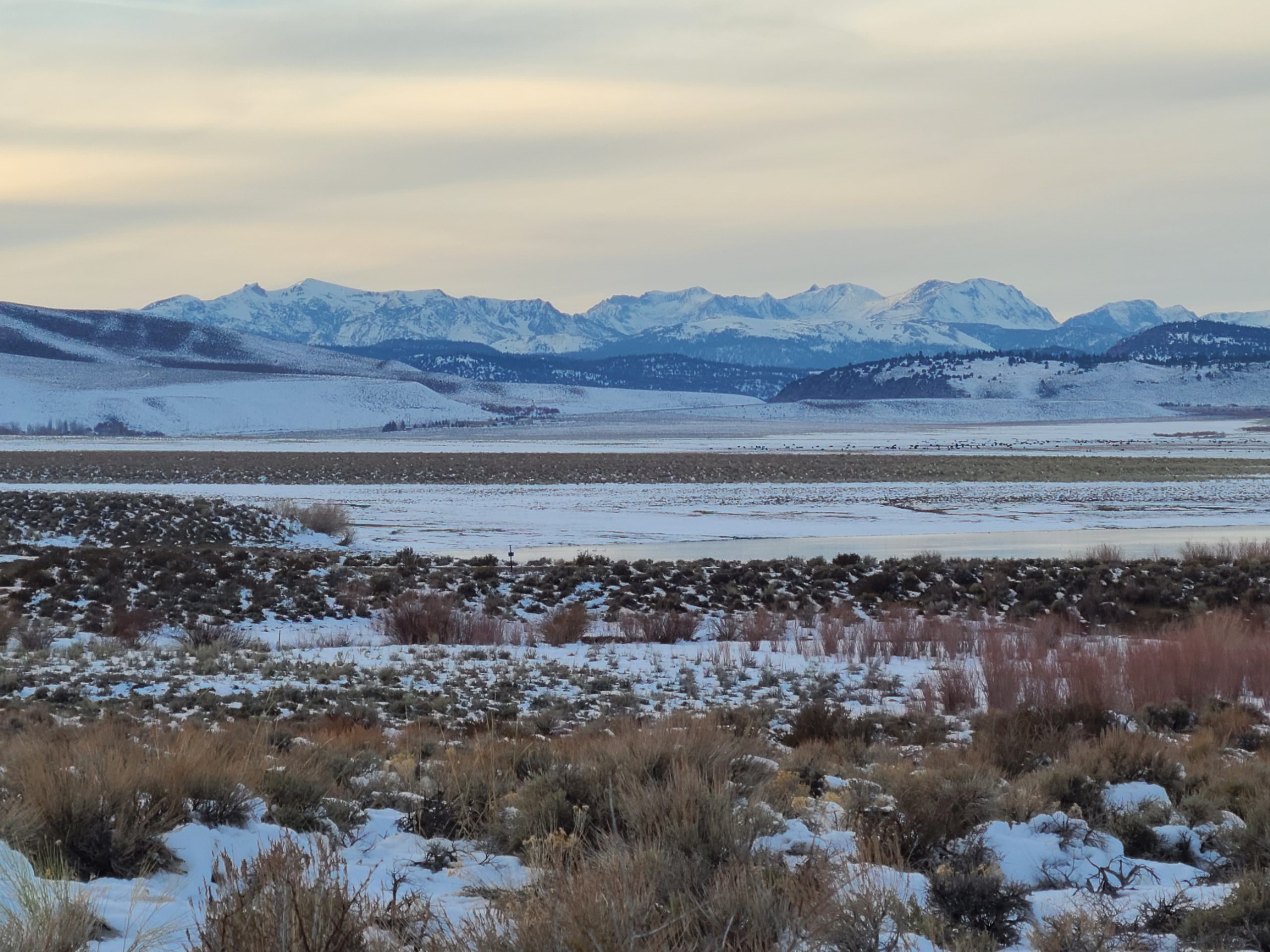
We are of course not the first to appreciate the views and the bounty of the area. Fossil evidence and oral histories suggest people have lived, hunted, gathered, and traded in the Sierra Nevada region since around 8,000 years ago.* They also were the first anglers, regularly consuming the area’s only native fish: Tui Chub, Owens Sucker, Speckled Dace, and Owens Pupfish.
The earliest hunters in this area likely came from villages in the warmer south, seeking game in the rugged eastern slopes. Some 3,000 years after first arrival (per the fossil evidence)—that is, around 5,000 years ago—these hunters started trading obsidian with others who came across the mountains from the west. For comparison, this is concurrent with the first Egyptian dynasty and the earliest construction at Stonehenge.
Possible only in the summer months, those trading camps continued for approximately 3,500 years, until around 1,500 years ago, when the hunters began bringing families into the area. These villagers soon also socialized with similar groups coming from the west and mixed communities thrived for another 700 or so years, eventually identifying as Owens Valley Paiute.
This way of life was disrupted in 1860, when Samuel Bishop brought his wife and hired hands into the (now) Owens Valley, bringing large herds of cattle. He treated the Paiute as at best irrelevant, at worst threats. Sending his cattle out to freely graze, they grew fat on wild hyacinth and nutgrass, staples of the Paiute diet. This resulted in a severe reduction in the stores the local peoples gathered to get them through winter months. When hit by the especially brutal winter of 1861-62, many starved.
Out of desperation, a Paiute man killed a cow for sustenance and Bishop’s people, in turn, killed a different Paiute. The tribe retaliated, killing a White man. An armed group of Whites then tracked local families to an area in (now) Alabama Hills, and killed them all. The Paiutes took up arms, the U.S. Army sent in soldiers, and the two-year (so-called) Owens Valley Indian War was waged.
The final acts of severe violence were precipitated in early 1865, when Paiutes killed a White woman and her son at a remote log cabin. Soldiers tracked them down and killed 41 people: women, children and most of the few remaining tribal warriors. The Paiute then accepted that their land, land they had lived on for 8,000 years, had been overtaken by Whites, and their violent resistance largely ceased.
Some 45 years later, the U.S. government established a reservation that spanned 67,000 acres across the Owens Valley. However, in 1932, President Hoover revoked the reservation and a few years later, all but 875 acres of the original 67,000 were ceded to the city of Los Angeles—along with the related water rights. The Bishop Paiute tribe, a sovereign nation, currently controls those 875 acres; their tribal headquarters can be visited on Tu-Su Lane, in Bishop.
The Paiute were obviously not the only persons whose Owen Valley water rights ended up in the hands of Los Angeles. That history has been well-documented in such books as Cadillac Desert (Reisner) and The Great Thirst: Californians and Water (Kahrl), and dramatized in the film, “Chinatown.” The short version: The White settlers who followed Bishop into the region in the 1870’s created small dams and canals, using them to irrigate what eventually became one of California’s more productive agricultural areas. However, as the rapidly growing, and largely arid, Los Angeles basin realized it needed water to sustain development, the then-mayor, Fred Eaton devised a plan to acquire the Owens Valley’s abundant supplies. Other excellent reads about the history of the Owens Valley include Miracle Country (Atleework) and Ghost Town Living: Mining for Purpose and Chasing Dreams at the Edge of Death Valley (Underwood). Both books look in detail at the history of the region.
Depending on whose history you read, the area’s water users were well-paid, enticed, tricked, coerced or robbed into ceding their water rights to what became the Los Angeles Department of Water and Power (DWP). Eaton hired William Mulholland to design an entire infrastructure of water conveyance—canals, tunnels, pumping stations, and reservoirs, eventually sending that liquid gold 250 miles down to a thirsty Los Angeles Basin.
Which brings us back to our favorite fishing hole: Crowley Lake. Not technically a lake, it is a reservoir created in 1941 when DWP built the 126 foot tall Long Valley Dam. Fed mainly by the Owens River, there are also a number of smaller creeks (McGee, Hot, Convict, Crooked) that help fill it to its approximate 185,000 acre feet capacity. The reservoir is one of many that follow the original river flow and that serve as storage for the LA Aqueduct, while also helping with flood management.
Mono County entrepreneurs and recreation enthusiasts soon recognized the lake’s mucky bottom produced abundant quantities of chironomids, a favorite meal for trout. Those locals, in partnership with California Department of Fish and Wildlife and private suppliers, undertook an annual stocking program to supplement the wild and holdover fish populations. Crowley quickly became recognized as a world-class fishery, drawing anglers – and their tourism dollars – from around the world.
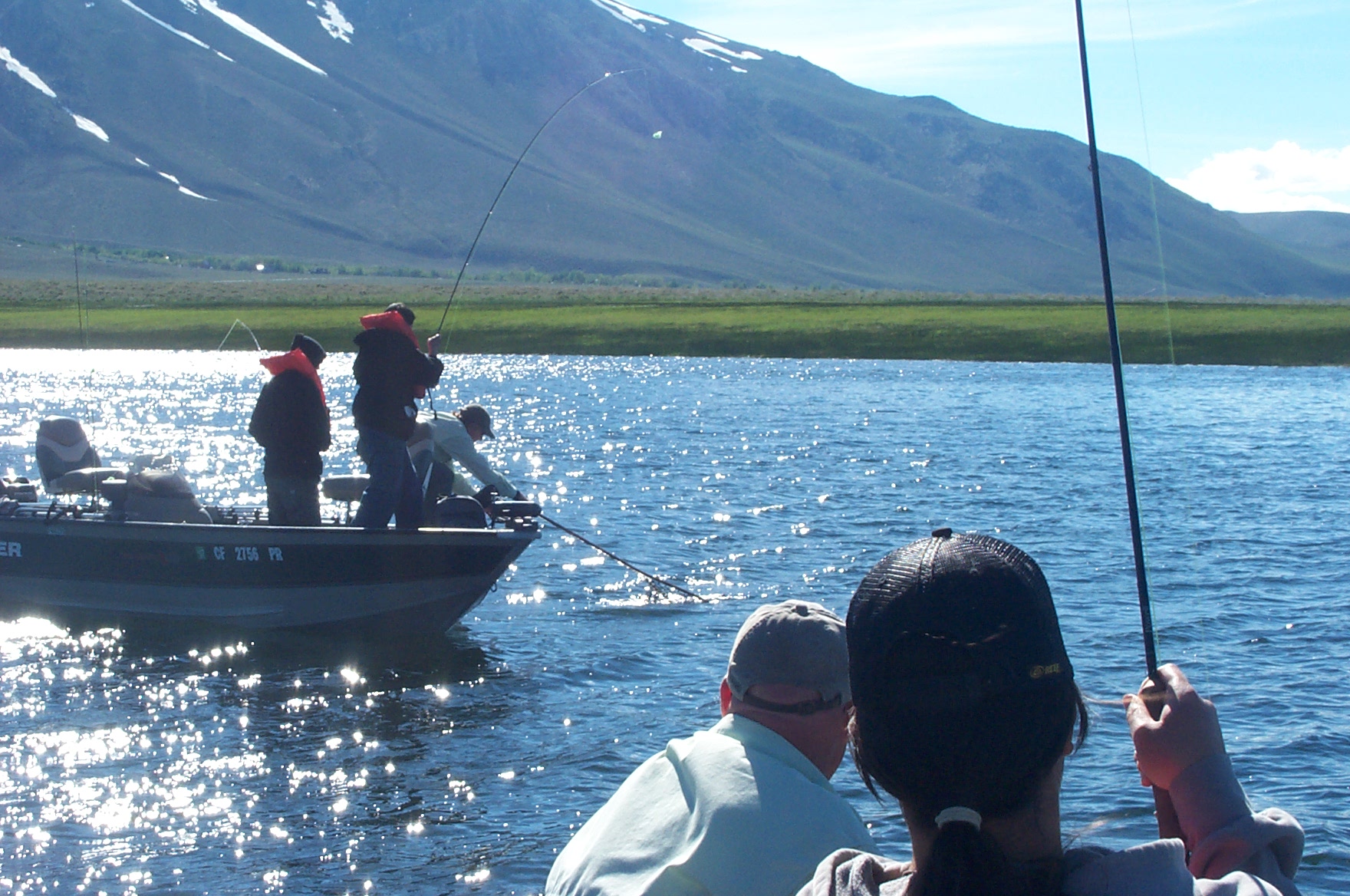
The goal of the Crowley Fish Foundation is to maintain Crowley Lake’s status as the treasured world-class trout fishery that it has been and continues to be. If you would like to support those efforts, please consider supporting our foundation.
*Much of what follows is amended from the Sierra Club’s related webpage: https://www.sierraclub.org/sierra/2016-4-july-august/americas-national-parks/people-s-history-sierra-nevada. Special thanks as well to Dr. Ken Gobalet, whose research into the region’s pre-historic waterways and flora helped inform our work.
